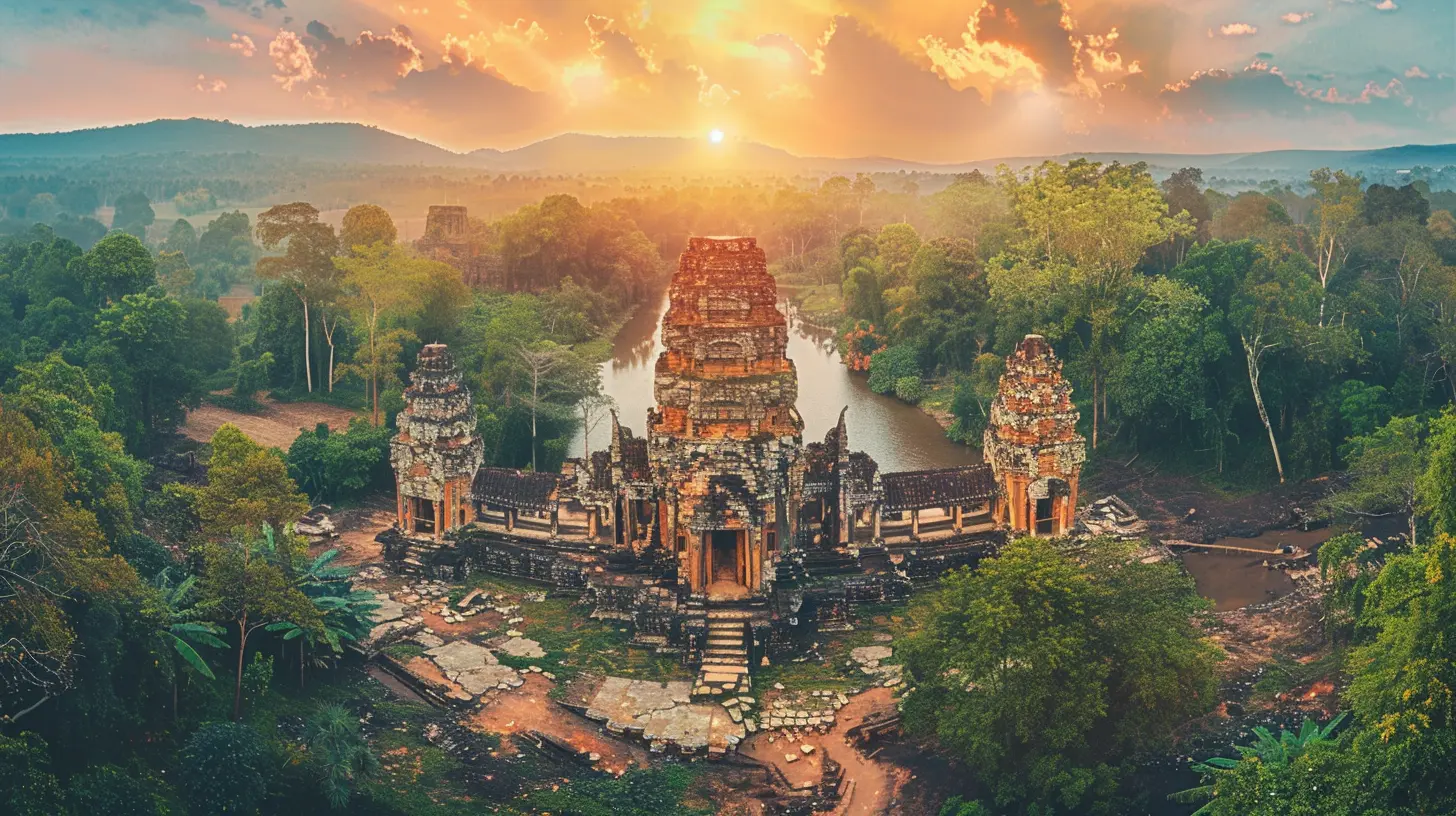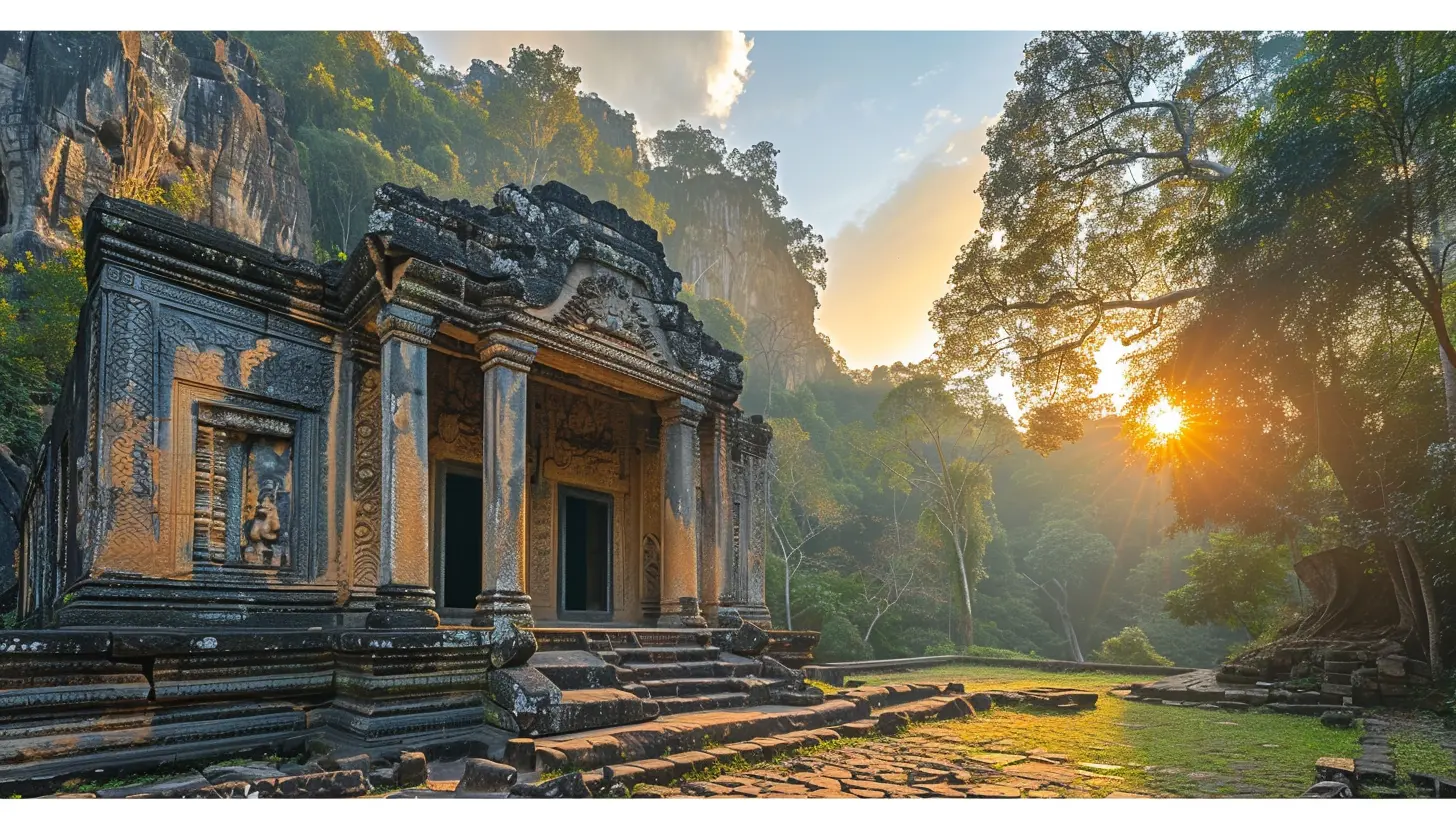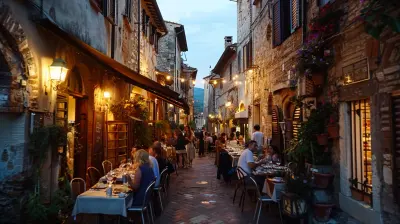UNESCO Sites and the Stories They Tell
4 July 2025
UNESCO World Heritage Sites are more than just stunning destinations; they are time capsules of human history, architectural marvels, and natural wonders. Each of these sites has a story to tell—tales of ancient civilizations, epic battles, artistic triumphs, and nature’s raw power.
Let’s take a journey through some of the most fascinating UNESCO sites and unravel the incredible stories behind them! 
1. Machu Picchu, Peru – The Lost City of the Incas
Nestled high in the Andes Mountains, Machu Picchu is one of the world’s most iconic archaeological sites. This ancient city, believed to have been built by the Incan emperor Pachacuti in the 15th century, was mysteriously abandoned before the Spanish conquests.The Mystery Behind Its Abandonment
Why was this thriving city deserted? Historians speculate that a combination of Spanish invasion, disease, and political turmoil led the Incas to flee. The thick jungle eventually swallowed the site, keeping it hidden for centuries until explorer Hiram Bingham rediscovered it in 1911.Today’s Machu Picchu
Now, tourists worldwide trek the Inca Trail to witness its breathtaking terraces and intricate stonework. But with increasing foot traffic, conservation has become a major concern—preserving Machu Picchu for future generations is a story still unfolding.
2. Petra, Jordan – The Rose City Carved from Rock
Imagine stumbling upon a hidden city carved into pink sandstone cliffs! That’s exactly what Swiss explorer Johann Burckhardt did when he rediscovered Petra in 1812. This ancient Nabataean city, dating back to around 300 BC, was once a bustling trade hub connecting the East and West.A City Built for Trade and Survival
Petra wasn’t just a pretty façade; it was strategically located between major trade routes. The Nabataeans mastered water conservation, creating reservoirs and channels to thrive in the desert. But as trade routes changed and earthquakes struck, Petra was abandoned and forgotten by the outside world.A Modern-Day Wonder
Today, Petra’s breathtaking Treasury (Al-Khazneh) and Monastery are among the world's most visited landmarks. As the sun sets, the pink sandstone glows, creating a magical scene that transports visitors back in time.
3. Angkor Wat, Cambodia – The Largest Religious Monument on Earth
Angkor Wat is more than just an architectural wonder—it's the spiritual heart of Cambodia. Originally built as a Hindu temple for Vishnu in the 12th century by the Khmer King Suryavarman II, it later transformed into a Buddhist shrine.The Rise and Fall of Angkor
Each stone of Angkor Wat tells a story of devotion and grandeur. The temple complex, surrounded by an enormous moat, symbolizes Mount Meru, home of the Hindu gods. But as the Khmer Empire weakened, the city was mysteriously abandoned, and nature took over.A Symbol of Resilience
Despite its abandonment, Angkor Wat remained standing, covered in lush jungle until French explorers rediscovered it in the 19th century. Now, it draws millions of visitors each year, standing as a testament to human ingenuity and endurance.
4. The Great Wall of China – A Defense Masterpiece
The Great Wall of China stretches over 13,000 miles, winding through mountains, deserts, and plains. Built between the 7th century BC and the 17th century AD, it was constructed to protect Chinese dynasties from invasions, particularly from Mongol warriors.A Monument to Determination
Imagine the sheer effort required to build a wall of this magnitude—millions of laborers, soldiers, and prisoners worked on it, some never to return home. The wall’s watchtowers served as beacons, signaling impending attacks with smoke and fire.A Symbol of Strength Today
Though parts of the wall have crumbled, sections remain well-preserved, offering hikers stunning views and a tangible connection to China’s past. Walking along the Great Wall is like stepping into history, feeling the weight of stories beneath your feet.5. The Pyramids of Giza, Egypt – A Testament to Pharaohs
The Pyramids of Giza are perhaps the most famous UNESCO site. Built around 4,500 years ago, these massive structures were tombs for Egyptian pharaohs, designed to ensure their safe passage to the afterlife.How Were They Built?
Even today, the construction of the pyramids remains a mystery. Some theories suggest massive limestone blocks were dragged on sleds, while others propose ramps or even alien intervention! Whatever the method, the precision with which these pyramids were built is mind-blowing.A Wonder That Endures
Despite millennia of erosion, looting, and urbanization, the pyramids still stand tall, captivating travelers and archaeologists alike. Their stories continue to unfold, with new discoveries hidden deep within their chambers.6. The Colosseum, Italy – The Arena of Gladiators
Step into the Colosseum, and you can almost hear the echoes of cheering crowds and the clash of swords. This massive amphitheater in Rome, completed in 80 AD, was the ultimate entertainment hub of ancient Rome.Blood and Glory
The Colosseum wasn’t just for gladiator fights—it hosted naval battles, theatrical performances, and even public executions. With a seating capacity of 50,000, it was the ancient equivalent of today’s sports stadiums.From Ruin to Restoration
Over centuries, earthquakes and neglect took their toll, but efforts to restore the Colosseum continue. Today, it stands as a fascinating reminder of Rome’s power and its love for grand spectacles.7. The Galápagos Islands, Ecuador – Darwin’s Living Laboratory
Unlike the other sites on this list, the Galápagos Islands are a natural UNESCO wonder teeming with unique wildlife. Located in the Pacific Ocean, these volcanic islands played a crucial role in Charles Darwin’s theory of evolution.A Paradise of Evolution
From giant tortoises to blue-footed boobies, the Galápagos Islands host species found nowhere else on Earth. Darwin’s observations here led to his groundbreaking work On the Origin of Species.A Fragile Ecosystem
Today, conservation efforts are essential to protect this delicate environment. Strict visitor regulations help preserve its biodiversity, ensuring future generations can witness nature’s wonders just as Darwin did.8. Auschwitz-Birkenau, Poland – The Darkest Chapter of History
Not all UNESCO sites celebrate beauty—some remind us of humanity’s darkest times. Auschwitz-Birkenau, the largest Nazi concentration camp, stands as a solemn memorial to the millions who perished during the Holocaust.A Site of Remembrance
Walking through Auschwitz is an emotional experience. The preserved barracks, gas chambers, and haunting artifacts tell stories of unimaginable suffering and resilience.Ensuring History is Never Forgotten
Maintaining Auschwitz as a UNESCO site ensures that the world never forgets the horrors of the past. It stands as a stark reminder of the importance of tolerance, peace, and human rights.Final Thoughts
UNESCO sites aren’t just places to visit—they are gateways to the past, offering a glimpse into the triumphs and tragedies that shaped humanity. Whether exploring ancient ruins, walking along historic walls, or witnessing the raw power of nature, each site tells a story worth remembering.So, which UNESCO World Heritage Site do you dream of visiting? Let us know in the comments!
all images in this post were generated using AI tools
Category:
Unesco SitesAuthor:

Ian Powell
Discussion
rate this article
2 comments
Piper Klein
UNESCO sites: where history meets your Instagram feed! From ancient ruins to stunning landscapes, each site has a story. Just remember, while you're busy snapping pics, the real adventure is soaking in the tales—not just the filters!
September 9, 2025 at 4:54 AM

Ian Powell
Absolutely! While photos capture the beauty, immersing ourselves in the stories behind each UNESCO site enriches the experience even more.
Harmony Summers
UNESCO Sites hold more than just stones and artifacts; they echo whispers of ancient secrets and untold stories. Each site invites you to unravel its mysteries, where history dances with legends, and every corner hides a tale waiting to be discovered.
July 12, 2025 at 2:57 PM

Ian Powell
Thank you for your poetic insight! Indeed, each UNESCO site is a treasure trove of history and mystery, inviting us to explore and connect with the past.


